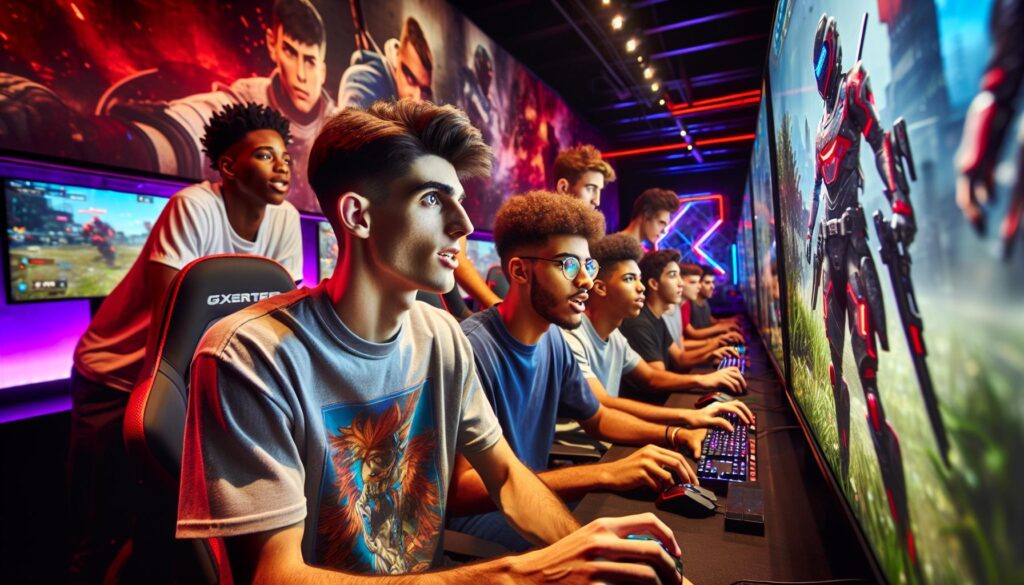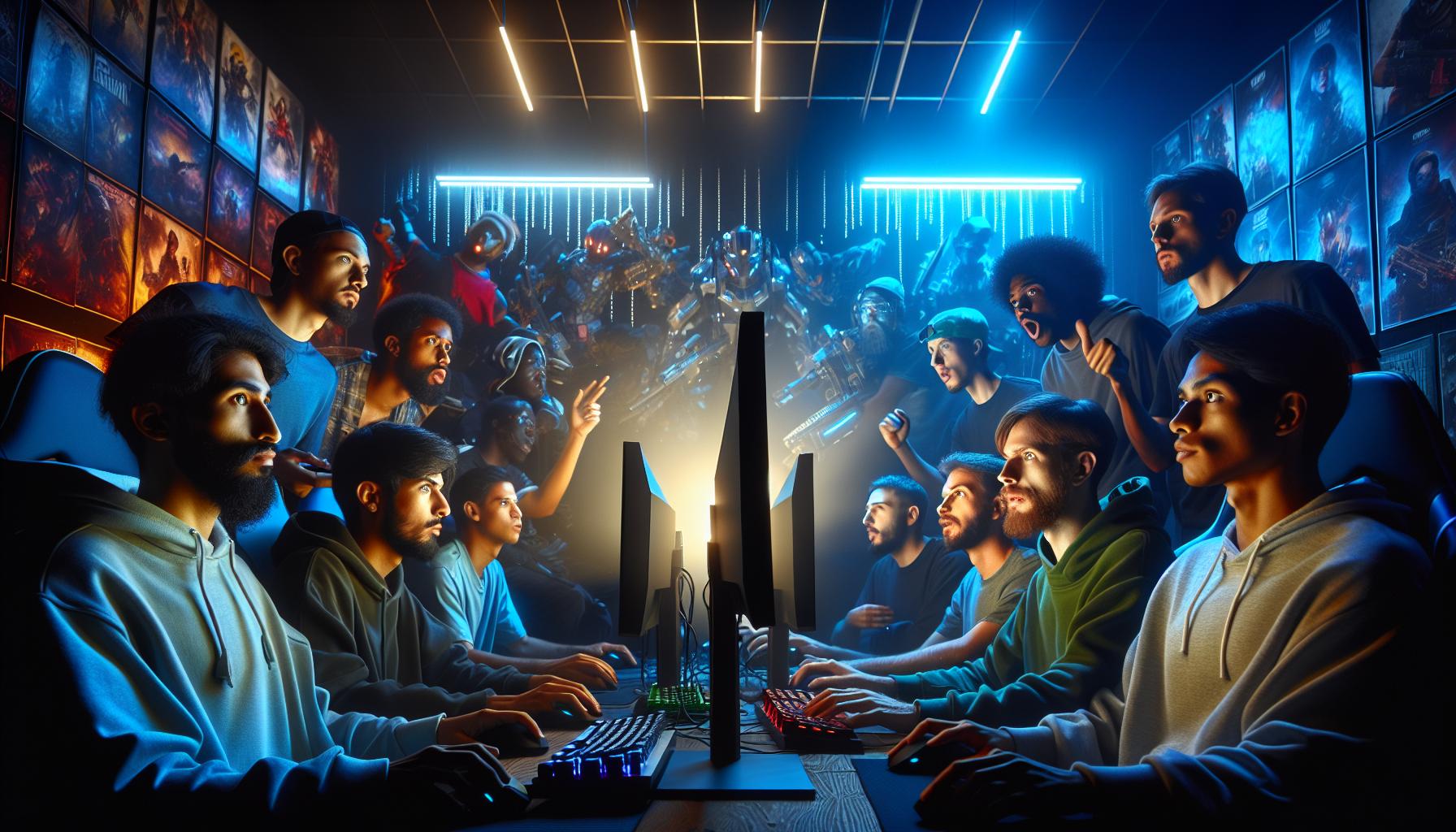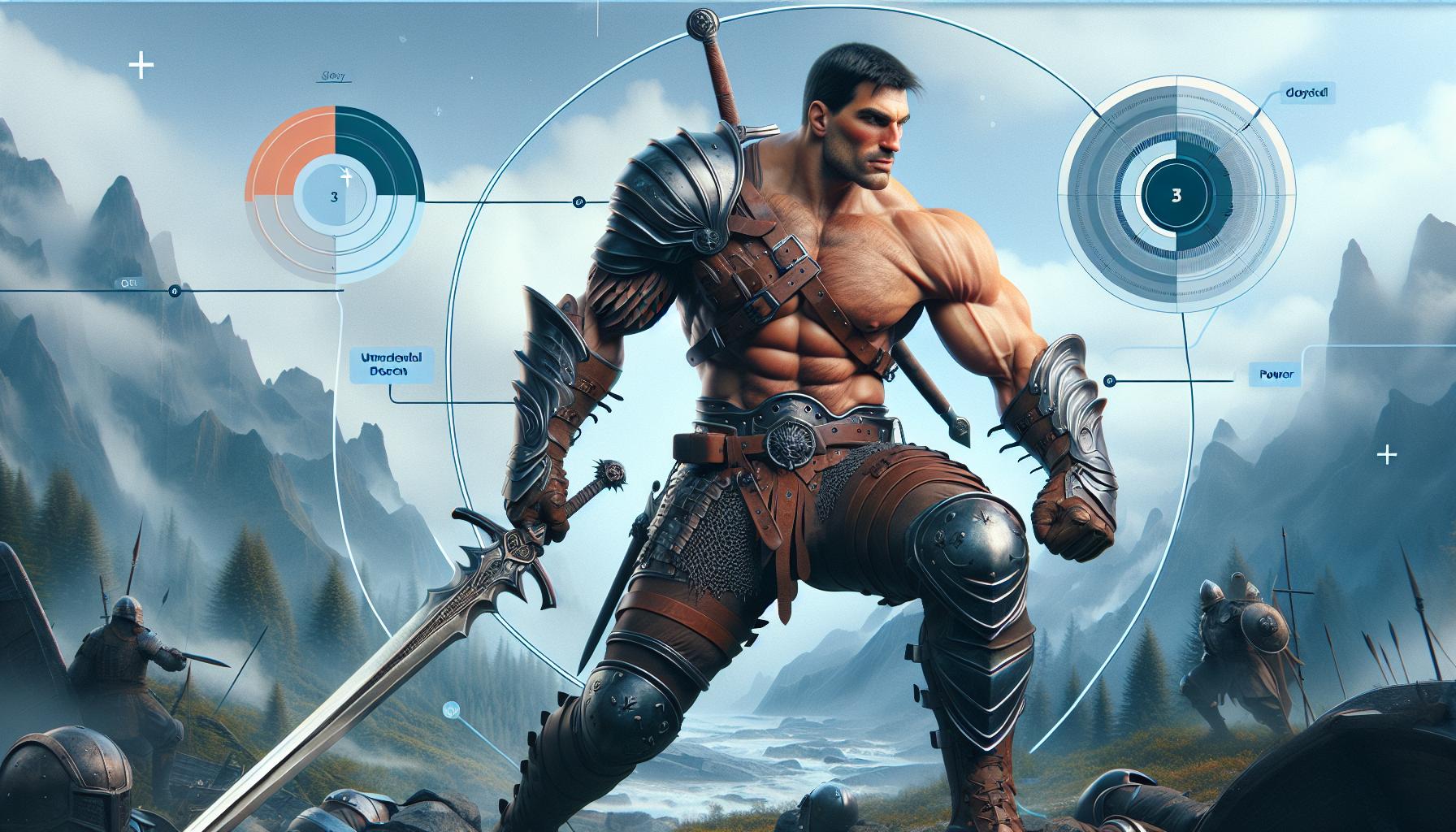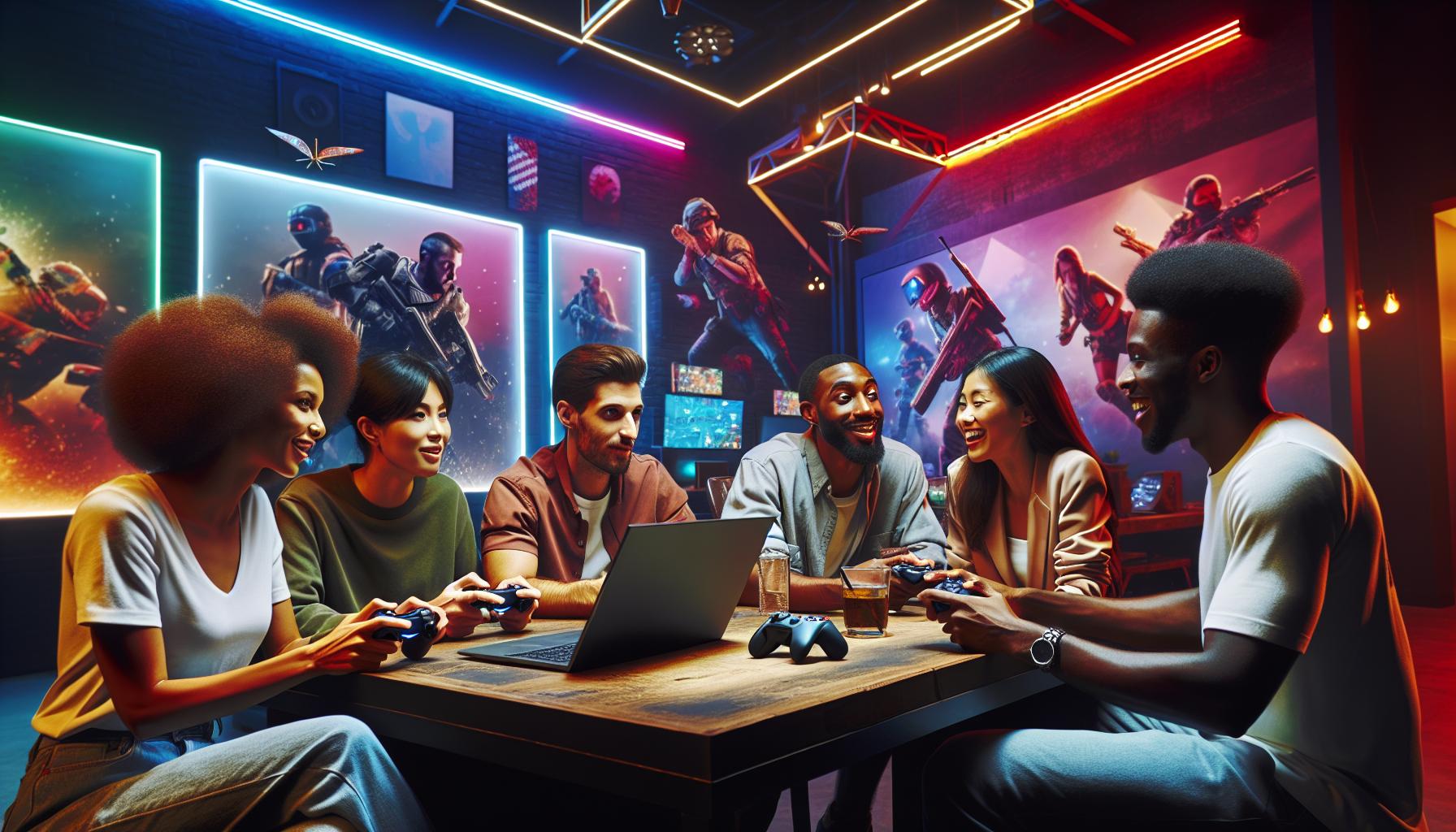Gaming has evolved far beyond the stereotype of teenagers huddled in dark basements with controllers in hand. Today’s male gaming culture represents a complex social phenomenon that shapes entertainment, relationships and even career paths. From casual mobile games to professional eSports tournaments, men have forged unique communities and identities within digital worlds.
This digital brotherhood comes with its own set of unwritten rules, inside jokes and shared experiences. While some aspects of male gaming culture celebrate competition and camaraderie, others have sparked heated debates about toxicity, inclusivity and the changing face of modern gaming. Whether it’s trash-talking during online matches or debating the merits of PC versus console gaming, these behaviors have become deeply woven into the fabric of male gaming identity.
Male Gaming Culture
Gaming spaces transformed from coin-operated arcades to digital realms, shaping distinct cultural patterns in male gaming communities. The influence of early marketing strategies combined with social dynamics created lasting impacts on gaming demographics.
Historical Context of Video Game Marketing
Early video game marketing campaigns targeted male consumers exclusively, establishing a foundation for gender-specific gaming spaces. Nintendo’s 1985 marketing strategy positioned the NES as a toy in retail stores’ electronics sections, deliberately avoiding the stigma of failed gaming consoles. Marketing materials from 1980 to 1995 featured predominantly male characters in action-oriented scenarios. Major gaming publications like Nintendo Power maintained masculine themes through aggressive advertising language targeted at young male readers.
| Year | Marketing Focus | Target Demographic |
|---|---|---|
| 1980s | Action/Combat | Boys 8-16 |
| 1990s | Competition/Power | Male teens |
| Early 2000s | Technology/Achievement | Young adult males |
The Arcade Era’s Impact on Gender Dynamics
Arcade culture established social territories dominated by male players during the 1970s and 1980s. Physical arcade spaces became competitive environments where players gathered to demonstrate skills and establish hierarchies. The layout of arcade venues created territorial dynamics with regular patrons claiming specific machines or areas. Competition for high scores fostered an atmosphere that attracted primarily male participants.
| Arcade Era Element | Impact on Gender Dynamic |
|---|---|
| Physical Space | Male-centric gathering spots |
| Social Structure | Competitive hierarchies |
| Game Design | Combat/Sports focus |
| Community | Skill-based recognition |
Toxic Masculinity in Gaming Communities
Gaming communities exhibit patterns of aggressive behavior rooted in traditional masculine ideals. These behaviors manifest through discriminatory practices targeting women players online harassment strategies against marginalized groups.
Online Harassment and Gatekeeping
Male gamers engage in exclusionary practices through targeted harassment campaigns voicechat abuse. Studies from the Anti-Defamation League reveal 65% of online players experience severe harassment with marginalized groups receiving disproportionate targeting. Common gatekeeping tactics include:
- Questioning player legitimacy based on gender identity
- Sending unsolicited explicit messages during gameplay
- Coordinating mass reporting of targeted players’ accounts
- Using discriminatory language in team communications
- Excluding players from groups based on voice characteristics
Competitive Gaming Culture
The competitive gaming environment reinforces aggressive masculine behavior through specific practices. Professional tournaments report 83% male participation rates with female players facing increased scrutiny. Observable patterns include:
- Aggressive trash talking during matches
- Dismissing losses with gendered insults
- Dominating voice channels with masculine perspectives
- Creating exclusive male-only practice groups
- Using winning records to establish social hierarchies
- Pressuring teammates to adopt confrontational attitudes
The culture perpetuates through streaming platforms where popular male content creators model these behaviors to millions of viewers.
Gender Stereotypes in Video Game Design
Video game character design perpetuates established gender stereotypes through exaggerated physical features and behavioral traits. Research indicates 78% of mainstream video games feature gender-stereotypical character designs that reinforce traditional masculine and feminine ideals.
Male Character Representation
Male protagonists in video games display hyper-masculine characteristics with unrealistic physical proportions and aggressive personalities. Studies reveal 85% of male characters exhibit muscular physiques with broad shoulders wide chests and angular facial features. These characters demonstrate dominance through combat-focused abilities leadership roles and stoic emotional expressions. Popular gaming franchises like God of War Gears of War and Duke Nukem showcase male heroes with exaggerated strength superhuman endurance and minimal emotional vulnerability. The character designs emphasize power fantasy elements through armor designs weapon choices and character animations.
Female Character Portrayal Through a Male Lens
Female characters in video games often reflect male design preferences rather than diverse female perspectives. Industry data shows 73% of female characters feature unrealistic body proportions revealing outfits and submissive personality traits. Combat-ready female characters wear impractical armor that prioritizes aesthetics over protection while non-combat roles restrict women to supportive or decorative functions. Games like Tomb Raider Bayonetta and Dead or Alive series demonstrate how female character designs focus on physical attractiveness even in action-oriented gameplay. Character animations emphasize suggestive movements while dialogue reinforces stereotypical feminine behaviors including flirtation emotional vulnerability and dependency on male characters.
The Rise of Inclusive Gaming Movements
Gaming culture undergoes significant transformations as community initiatives push for greater inclusivity. Diverse voices challenge traditional male-dominated spaces through organized movements social media campaigns.
Industry Efforts to Diversify
Major gaming companies implement comprehensive diversity initiatives to create inclusive gaming environments. Microsoft’s Gaming for Everyone program partners with 45 organizations to promote accessibility features inclusion training. Studios like Blizzard Entertainment established diversity councils resulting in a 35% increase in diverse character representation across their games. The International Game Developers Association reports 47% of gaming companies now maintain dedicated diversity departments focused on inclusive hiring practices content creation. Game publishers allocate specific budgets for diversity initiatives with Sony PlayStation investing $10 million in independent studios led by underrepresented developers.
Changing Player Demographics
Recent gaming industry surveys reveal dramatic shifts in player demographics across platforms genres. Female players now comprise 45% of the gaming population with significant representation in mobile RPG markets. The average age of gamers increased to 35 years showing broader generational appeal. Asian American Pacific Islander communities represent 21% of console gamers while LGBTQ+ players make up 12% of PC gaming audiences. Mobile gaming platforms demonstrate the most diverse player base with 55% of users identifying as non-male 40% representing ethnic minorities. Competitive gaming leagues report a 27% increase in diverse participation since 2019.
Reshaping Gaming Culture for the Future
Gaming culture evolves through intentional changes in industry practices social norms. The transformation focuses on creating equitable spaces that welcome diverse perspectives while maintaining gaming’s core entertainment value.
Breaking Down Gender Barriers
Gaming companies implement structured diversity programs to dismantle traditional gender roles in games. Character customization options now include broader representations, with 47% of major titles offering non-binary options. Development studios actively recruit female developers, resulting in a 32% increase in women game designers since 2020. Cross-platform accessibility features accommodate different play styles preferences. Major publishers partner with advocacy groups to review content for gender stereotypes before release. Industry leaders establish mentorship programs connecting experienced female developers with emerging talent. Game narratives increasingly feature complex character arcs that transcend gender-based tropes.
Creating Safer Online Spaces
Gaming platforms strengthen moderation systems using AI-powered tools to detect harassment. Automated filtering catches 89% of toxic messages before they reach players. Report systems now include specific categories for gender-based harassment with 24-hour response times. Gaming communities adopt zero-tolerance policies for discriminatory behavior enforced through permanent account bans. Popular streaming platforms implement content guidelines prohibiting gender-based attacks. Cross-platform reputation systems track player behavior across multiple games. Community managers receive specialized training in handling harassment reports. Voice chat options include individual muting capabilities gender-neutral voice modification tools.




